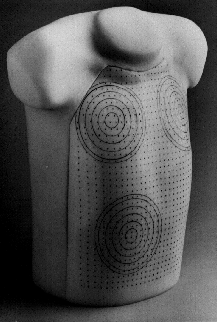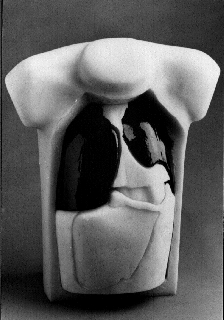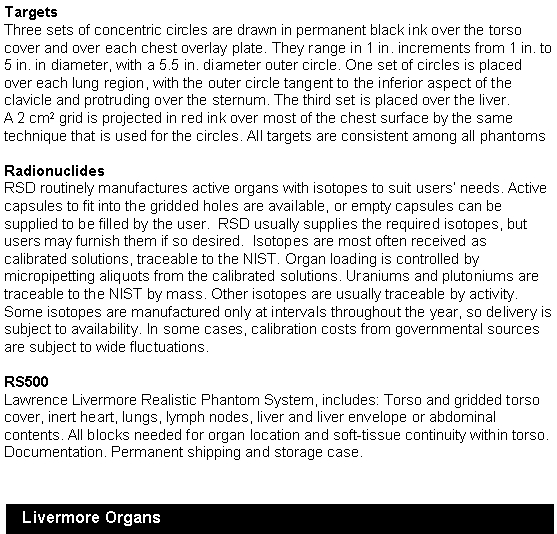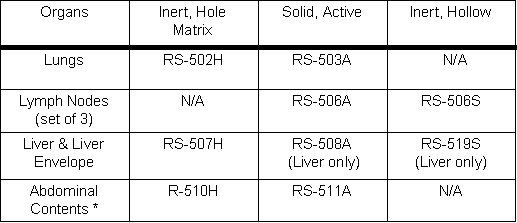|
|||||||||


|
|||||||||
| The
Lawrence Livermore Realistic Phantom was developed under the direction
of the U.S. Department of Energy, primarily as a reference standard for
the in-vivo counting of emissions from low-energy transuranic nuclides.
The organs of interest are the lungs, liver and lymph nodes. Each of these may be radioactive or inert. These organs are accommodated in a male thorax generally similar to average adult males. The Livermore phantom contains a synthetic bone skeleton molded within a soft-tissue-equivalent material. The organs are located in an internal cavity with a separate torso cover that closes the phantom. Anterior sections of ribs and the sternum are molded into this cover. Soft-tissue-equivalent blocks are used to position the organs and fill significant air spaces, providing continuity of the soft-tissues throughout the phantom. The phantom is shipped assembled with inert organs. Any or all of these organs can be replaced with radioactive organs, which are shipped in separate packages. Organs
Chest Overlay
Plates
|
||


| * Replaces Liver and Liver Envelope | ||
| Chest
Overlay Plates
RS-513 Chest Overlay Plate (Any of 4 thicknesses) (1,2,3,4) #1 - thinnest, #4- thickest (A,B,C) A) 87% adipose - 13% muscle B.) 50% adipose -50% muscle C.) 100% muscle RS-514 Chest
Overlay Plates
Capsules
|
||